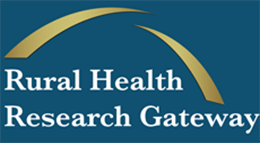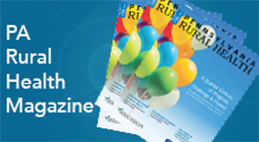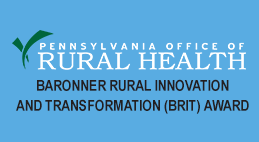- CMS: Medicare and Medicaid Programs: CY 2026 Payment Policies Under the Physician Fee Schedule and Other Changes to Part B Payment and Coverage Policies; Medicare Shared Savings Program Requirements; and Medicare Prescription Drug Inflation Rebate Program
- Public Inspection: CMS: Medicare and Medicaid Programs: CY 2026 Payment Policies under the Physician Fee Schedule and Other Changes to Part B Payment and Coverage Policies; Medicare Shared Savings Program Requirements; and Medicare Prescription Drug Inflation Rebate Program
- CMS: Medicare Program; Implementation of Prior Authorization for Select Services for the Wasteful and Inappropriate Services Reduction (WISeR) Model
- Public Inspection: CMS: Medicare Program: Implementation of Prior Authorization for Select Services for the Wasteful and Inappropriate Services Reduction Model
- CMS: Secretarial Comments on the CBE's (Battelle Memorial Institute) 2024 Activities: Report to Congress and the Secretary of the Department of Health and Human Services
- HHS: Patient Protection and Affordable Care Act: Marketplace Integrity and Affordability
- Public Inspection: HHS: Patient Protection and Affordable Care Act: Marketplace Integrity and Affordability
- Increased Risk of Cyber Threats Against Healthcare and Public Health Sector
- HRSA Announces Action to Lower Out-of-Pocket Costs for Life-Saving Medications at Health Centers Nationwide
- Announcing the 2030 Census Disclosure Avoidance Research Program
- Eight Hospitals Selected for First Cohort of Rural Hospital Stabilization Program
- CMS: Medicare Program; Hospital Inpatient Prospective Payment Systems for Acute Care Hospitals and the Long-Term Care Hospital Prospective Payment System and Policy Changes and Fiscal Year 2026 Rates; Requirements for Quality Programs; and Other Policy Changes; Correction
- CMS: Medicare Program; Hospital Inpatient Prospective Payment Systems for Acute Care Hospitals and the Long-Term Care Hospital Prospective Payment System and Policy Changes and Fiscal Year 2026 Rates; Requirements for Quality Programs; and Other Policy Changes; Correction
- CMS: Medicare and Medicaid Programs; Contract Year 2026 Policy and Technical Changes to the Medicare Advantage Program, Medicare Prescription Drug Benefit Program, Medicare Cost Plan Program, and Programs of All-Inclusive Care for the Elderly; Correction
- CMS: Medicare and Medicaid Programs; Contract Year 2026 Policy and Technical Changes to the Medicare Advantage Program, Medicare Prescription Drug Benefit Program, Medicare Cost Plan Program, and Programs of All-Inclusive Care for the Elderly; Correction
CMS Kicks Off Medicare Open Enrollment with Lower Premiums, Improved Benefits for 2023

Thanks to the Inflation Reduction Act, enrollees will have lower costs for insulin and free ACIP-recommended vaccines starting in 2023. People with Medicare should review their coverage and drug and health plan options through December 7, 2022 on Medicare.gov
Medicare Open Enrollment begins tomorrow — Saturday, October 15 — and will remain open through December 7, 2022. Medicare’s Open Enrollment period gives people with Medicare the opportunity to make changes to their health plan or prescription drug plan, pick a Medicare Advantage plan, or return to Original Medicare (also referred to as Medicare Part A and Part B). Medicare plans can change their offerings and costs every year, and individuals’ health needs can change from year-to-year, too. Now is the time for people with Medicare to review their coverage options and make a choice that best meets their health care needs.
The Biden-Harris Administration has made expanding access to health insurance and lowering health care costs for America’s families a top priority. Just last month the Biden-Harris Administration announced that people with Medicare will see lower average premiums for Medicare Part B, Medicare Advantage, and Medicare Part D prescription drug plans in 2023.
This year, thanks to the Inflation Reduction Act that President Biden signed into law in August, Medicare enrollees will also see lower costs for insulin and vaccines beginning in 2023. Starting in 2023, all people with Medicare who take insulin covered by their prescription drug plan or through a traditional pump covered under Original Medicare will pay no more than $35 in cost-sharing for a month’s supply of each covered insulin product. People with Medicare also will not pay a deductible with respect to each covered insulin product. Additionally, people with Medicare drug coverage will pay nothing out-of-pocket for adult vaccines recommended by the Advisory Committee on Immunization Practices (ACIP) — including the shingles vaccine and Tetanus-Diphtheria-Whooping Cough vaccine. More information on the Inflation Reduction Act and these changes is available at https://www.cms.gov/newsroom/fact-sheets/inflation-reduction-act-lowers-health-care-costs-millions-americans.
“This year, more than ever, it is vital that people with Medicare review and compare their options to find the coverage that best meets their needs,” said HHS Secretary Xavier Becerra. “Thanks to the Inflation Reduction Act, we are lowering the cost of insulin and vaccines for the more than 64 million people with Medicare. The Biden-Harris Administration is unwavering in our commitment to strengthening Medicare, and we will keep doing all we can to lower costs and improve benefits.”
“We are committed to providing comprehensive and easily accessible information to support people with Medicare in their decision making,” said CMS Administrator Chiquita Brooks-LaSure. “Medicare.gov makes it easier than ever to compare coverage options and shop for plans. People can do a side-by-side comparison of plan coverage, costs, and quality ratings to help them more easily see the differences between plans.”
Since 2021, CMS has introduced a number of enhancements to Medicare.gov to optimize customer experience and create a more welcoming and user-friendly experience. Improvements include a redesigned Medicare.gov home page, the addition of pricing details to the Medigap policy comparison, streamlined landing and summary on the Medicare Plan Finder, and a redesigned “Talk to Someone” section to find additional help and contacts. All of these enhancements improve the overall experience, making it easier to navigate and access information to compare and select health and drug coverage and find providers.
The Medicare Open Enrollment period occurs every year from October 15 through December 7, with coverage changes taking effect January 1.
Things to Consider When Shopping for Medicare Coverage
- There are two main ways to get your Medicare coverage — Original Medicare and Medicare Advantage (Medicare-approved plans from private companies). There are differences between the two that are important to understand when choosing your coverage.
- If you are selecting a Medicare Advantage plan, check with your health care providers to confirm they are in a plan’s network.
- If you are selecting a Medicare prescription drug plan, check if your prescriptions are included on a plan’s formulary.
- Remember that a low monthly premium may not always be the best overall value to meet your specific needs.
- Review a plan’s estimated total costs to you, including deductible and other out-of-pocket costs.
- If you take insulin, there is a new out-of-pocket cap on a month’s supply of each insulin product when covered by a prescription drug plan or under Original Medicare. Talk to someone for help comparing plans by calling 1-800-MEDICARE
Medicare is Here to Help
Here are four ways you can compare plans and look at savings options:
- Go to Medicare.gov to learn the difference between Original Medicare and Medicare Advantage, and do side-by-side comparisons of costs and coverage for Medicare Advantage and prescription drug plans.
- Call 1-800-MEDICARE. Help is available 24 hours a day, including weekends.
- Access personalized health insurance counseling at no cost, available from State Health Insurance Assistance Program (SHIP). Visit shiphelp.org or call 1-800-MEDICARE for each SHIP’s phone number. Many SHIPs also offer virtual counseling.
- Check eligibility for Medicare Savings Programs. If you have limited income and resources, you could qualify for Medicare Saving Programs run by your state Medicaid program. These programs could help save you money on health and prescription drug costs and/or could reduce your Part B premium from $165 to $0. For more information, contact your state Medicaid program or call 1-800-MEDICARE and ask about Medicare Savings Programs.
For more information, visit Medicare.gov or call 1-800-MEDICARE (1-800-633-4227). TTY users can call 1-877-486-2048. Help is available 24 hours a day, including weekends.
Brief Explores Barriers to Oral Health Equity
The Center for Health Care Strategies, with support from the CareQuest Institute for Oral Health, published a brief, “Advancing Oral Health Equity for Medicaid Populations.” The brief describes common barriers for addressing oral health equity for Medicaid populations and outlines recommendations to improve oral health access and quality within four key areas: coverage and access, workforce capacity building, partnerships, and payment.
FDA Launches Vaping Prevention & Education Resource Center
The Food and Drug Administration (FDA) Center for Tobacco Products announced the launch of their new Vaping Prevention and Education Resource Center. The online resource center provides science-based, standards-mapped materials that can be used to help middle and high school students understand the dangers associated with vaping and nicotine addiction.
Affordability of Employer Coverage for Family Members of Employees
On October 11, 2022, the Internal Revenue Service released a final rule that changes the way health insurance affordability is determined for members of an employee’s family, beginning with plan year (PY) 2023 coverage. Beginning in 2023, if a consumer has an offer of employer-sponsored coverage that extends to the employee’s family members, the affordability of that offer of coverage for the family members (of the employee) will be based on the family premium amount, not the amount the employee must pay for self-only coverage.
The final rule is effective for PY2023. The change will be reflected in the online application through the HealthCare.gov enrollment platform and enhanced direct enrollment certified partner applications during the PY2023 Open Enrollment period beginning November 1, 2022. State-based Marketplaces not using the HealthCare.gov enrollment platform are also working to implement this change, but may have different implementation timelines.
To view the final rule, visit: https://www.federalregister.gov/public-inspection/2022-22184/affordability-of-employer-coverage-for-family-members-of-employees.
USDA Invests $1.8 Million to Improve Health Care in Rural Pennsylvania

U.S. Department of Agriculture (USDA) Rural Development State Director Bob Morgan today announced that USDA is awarding $1.8 million in grants to improve health care facilities in rural towns in Pennsylvania. These grants will help two health care organizations and one food bank.
“Emergency Rural Health Care Grants support rural communities in providing health care to the people and places that often lack access,” Morgan said.
The projects awarded in this round of funding are:
- The Elk Haven Nursing Home Association received a grant of $767,200 to reimburse lost healthcare revenue.
- The City of Braford in McKean County received a grant of $105,100 to purchase an ambulance.
- The Chester County Food Bank received a grant of $1 million to reimburse costs of food purchases because of the COVID-19 pandemic.
You can read the complete news release here.
New Rural Innovation Profiles Released!

The Rural Health Value team recently released two new Rural Innovation Profiles:
Experience in the Pennsylvania Rural Health Model: Barnes-Kasson County Hospital
A critical access hospital in Susquehanna, PA provides insight into their experience participating in the Pennsylvania Rural Health Model, which includes a global budget and transforming care to address community health needs.
MaineHealth ACO – Integrating and Using Data to Support Care Delivery
A predominantly rural network of hospitals and clinics in Maine integrates clinical and claims data to support improvements in care delivery and target patient needs as part of their Accountable Care Organization.
Related resources on the Rural Health Value website:
- Catalog of Value Based Initiatives for Rural Providers – One-page summaries describe rural-relevant, value-based programs currently or recently implemented by the Department of Health and Human Services (HHS), primarily by the Centers for Medicare & Medicaid Services (CMS) and its Center for Medicare & Medicaid Innovation (CMMI).
- Guide to Selecting Population Health Management Technologies for Rural Care Delivery – Better manage the health of existing patient populations by implementing technology with this guide from Rural Health Value that walks you through the process to plan for and implement the technology.
- Value-Based Care Assessment – This tool helps a rural organization assess readiness for the shift of healthcare payments from volume to value. The resulting report may be used to guide the development of action plans.
Contact information:
Clint MacKinney, MD, MS, Co-Principal Investigator, clint-mackinney@uiowa.edu
Rural Health Value helps create high performance rural health systems by building and offering an actionable knowledge base through research, practice, and collaboration. Visit www.ruralhealthvalue.org.
State Offices of Rural Health Help Rural Hospitals Face ‘Challenge’ of Extra Funding

It may sound like a good problem to have – lots of extra money for rural healthcare facilities during a medical crisis. But state Offices of Rural Health found that hospitals needed extra assistance to use the pandemic-related funds effectively.
When billions of dollars in federal funding started flowing into rural healthcare agencies as part of the American Rescue Plan, facilities turned to State Offices of Rural Health for assistance in how to use it.
Shortly after the public health emergency declaration, nearly $400 million in funding went to 1,540 rural hospitals with fewer than 50 beds through the Small Rural Hospital Improvement Program (SHIP).
Those funds were to go toward operational improvements including hardware, software and training. Additionally, the Federal Office of Rural Health Policy developed a number of programs for Medicare-Certified Rural Health Clinics (RHCs) that provided each hospital with $49,000 (in May 2020) for Covid-19 testing, another $100,000 (in June 2021) for Covid testing and mitigation, and another $50,000 (in July 2021) for Covid vaccination confidence programs.
State Offices of Rural Health helped RHCs in their own states apply for funding and track how that funding was spent. But, since each state office is different, how the state offices responded to the crises varied.
In some states, Offices of Rural Health are a function of the state government. But many are not. Tammy Norville, CEO of the National Organization of State Offices of Rural Health (NOSORH), said in an interview with the Daily Yonder that each state is different. Three state Offices of Rural Health are non-profit organizations, while 13 are located in academic settings – either universities or community colleges. The rest, she said, are part of state government. Those located in state government, Norville said, are most often located in their state’s Department of Health and Human Services, except for one which is located in the state’s Department of Agriculture.
“We like to say, when you’ve seen one state Office of Rural Health, you’re really seen one state office of rural health,” Norville said. “They’re all set up differently. Even the ones in state government offices. They’re different in how they’re staffed, how the work is distributed. It’s all depends on the state they’re in.”
At NOSORH, the goal was to provide support to state offices of rural health as they, in turn, supported their RHCs.
In some cases, that meant taking the pulse of what was going on during the pandemic and highlighting some of the best practices that were going on among the offices.
For individual state Offices of Rural Health, the funding for Rural Health Clinics came at a critical time.
Robert Duehmig, interim director of the Oregon Office of Rural Health, said in an interview with the Daily Yonder that the money was needed, but almost overwhelming.
“The amount of money that flowed from the federal government and from the state government and different entities was huge,” he said. “And it was done at a time where even if we were fully staffed, we’re not huge offices, and neither are a lot of our clinics. We were starting to close down for a period of time. The expectations of some of those funds I think were often or somewhat unrealistic.”
The Oregon Office of Rural Health’s role in distributing that money was to make sure the hospitals were eligible and to help them identify how they were going to spend those funds. Once the hospitals had signed an agreement on how they would spend those funds, the state office would distribute them.
Some eligible hospitals chose not to take the federal funds though. Five rural hospitals in Oregon did not. Duehmig said it was not that they didn’t need it or that they weren’t eligible, but that in some cases they were having trouble finding expenses to apply those funds to. In other cases, there just wasn’t enough manpower in the hospital to monitor and record how the funds were used.
In Michigan, John Barnas, executive director of Michigan Center for Rural Health, said the relationship between the center and the state health organization was key in getting grant money to the right communities.
Working with the Michigan Department of Health and Human Services, the Michigan Center for Rural Health was able to cooperatively get funding to needy rural communities. And by looking at the data, the center was able to find populations that needed the funding the most.
“We utilized population-based data to look at age demographics, race, ethnicity demographics, poverty demographics,” Barnas said. “We also looked at data around immunization levels for flu and Covid-19.”
Norville said the money came as a blessing, but also as a curse. At a time when rural health clinics were at their busiest, she said, the federal government was throwing money at them, requiring them to spend it in certain ways, and asking them to track how they spent it. That meant more labor to monitor how the money was spent, she said.
“Just think about the effort that it took to do that in the middle of a public health emergency… but these guys did it, I mean, that’s the story, right? Regardless of what left hooks came at them, they rose to the challenge. And they did what they needed to do to take care of things.”
Opioid Addiction in Farm Country a Sad Legacy
From Lancaster Farming
September was National Recovery Month, launched in 1989 to promote new evidence-based treatment, celebrate the vibrant recovery community and the service providers who furnish support, and to offer hope for those still struggling.
Three years ago in September, Pennsylvania joined Farm Town Strong, an effort spearheaded by the American Farm Bureau Federation and the National Farmers Union to bring attention to the opioid epidemic in farming communities and offer resources to those battling addiction.
The scope of the crisis in rural America was staggering, with 74% of farmers and farmworkers reporting they had been directly impacted by opioids, three in four farmers saying it was easy to access large amounts of opioids without a prescription, and one in three adults saying addiction treatment was readily available.
“Addiction is a is a complex disease that can’t be reduced down to simple neurobiology,” said Dr. Adam Scioli, medical director and head of psychiatry at Caron Treatment Center in Wernersville, Pennsylvania. The nonprofit rehab facility was founded as Chit-Chat Farms by recovering alcoholic Richard Caron and his wife, Catherine (Tildon) Caron, and opened the doors to its first patients in 1959.
Multiple factors play a role in both the development of a substance-use disorder and its progression, Scioli said, including co-occurring mental health conditions, such as depression or anxiety, that may also need addressing.
Sickness, Not Sin
“I had a mentor here many years ago who had a very, very simple way of summarizing it,” said Rev. Jack Abel, senior director of spiritual care at Caron. “He was a Catholic priest, but he used to say, ‘Jack, my understanding of this is that it’s sickness, not sin.’ And I think that can be helpful, sometimes, for people who have strong faith backgrounds.”
Faith communities especially may tend to view addiction as a moral failure, when it’s not, he said. Such a viewpoint can contribute to a reluctance to seek help, he said, and offer the false solution that a person in active addiction can simply make better choices, or simply repent
“One of the things that kind of defines addiction, in my experience, is that it’s frustratingly irrational,” Abel said, and so appealing to an addicted person’s power of reason can be useless. Thus, he said, it is difficult to intercept addictive behavior without intervention.
Faith communities excel at caring for the sick, he said, and so ministering to those afflicted boils down to changing that community’s mindset.
“It’s a different approach, where we encourage healing instead of repentance,” Abel said. “And that’s the direction that I’ve always tried to take with people, whether religious or not.”
Not Going Away
“Over the past, I’d say, 20 years, the increase in total number of deaths involving opioids, particularly fentanyl and other synthetic opioids, has increased dramatically,” Scioli said, adding that the opioid crisis was finally declared a nationwide public health emergency in the fall of 2017.
Fentanyl, which is about 100 times more potent than morphine and 50 times more potent than heroin, is sold by prescription, typically as a slow-release patch for severe pain treatment. It is also manufactured in illegal drug labs.
“We’re acutely aware here at Caron of the need to address substance use and, in particular, opioid use, because there’s a high likelihood of fatality,” Scioli said. “It certainly can happen very quickly. It certainly can happen on the very first use. And the unfortunate fact is that opioids that people are ingesting have gotten more dangerous because fentanyl has been either adulterating them, or people are actually seeking fentanyl.”
A large number of fentanyl overdoses occur in people who don’t even realize they are taking the drug, he said.
Opioids are in a class all by themselves when it comes to treating addiction, Scioli said.
“We at Caron actually have an opioid track where we focus on the disease opioid use disorder exclusively as a separate and distinct phenomenon, which requires a biopsychosocial spiritual approach,” he said.
That approach includes making sure the patient has a safe and comfortable withdrawal, helping them decide whether to use a medication — such as buprenorphine (Suboxone) — to assist recovery, and assuring they have the support network to sustain them once they leave the treatment facility.
“Addiction is certainly a family disease, and we have recognized that since our origins,” Scioli said. “There’s an expression here at Caron that resonates with me, that ‘the patient is the family and the family is the patient.’ We talked about the importance of a supportive environment, and that involves, when someone comes into treatment, making sure that their family members or loved ones understand that addiction is a disease and not a choice and that there are going to be certain supports that their loved one requires in order to succeed, not just changes at home, but attitudinal changes toward their loved one, who is now a patient.
Sadly, Scioli said, not everybody is able to overcome addiction.
“And when there’s a loss, the loss is felt by far more people than that person who was trapped in addiction probably ever realized. The disease of addiction does not discriminate based on socioeconomic status or gender or occupation—whether or not you have children or you are a child.”
National Dental Group Works to Improve Access for Patients with Disabilities
The American Dental Association (ADA) shared several ideas about how Congress can ensure greater health outcomes for people with disabilities by providing accommodations in health care settings and further developing a health care workforce that understands the needs of people with disabilities. The ADA also urged Congress to provide grants for the training and continuing education of dentists on treating patients with disabilities to dental schools, dental residency and fellowship programs, and dental associations.
Pennsylvania Transportation Department Accepting Unsolicited Public-Private Partnership Proposals Until October 31
Submission period applies to PennDOT-owned projects and infrastructure
The Pennsylvania Department of Transportation (PennDOT) Office of Public-Private Partnerships (P3) announced today that it is accepting unsolicited proposals for transportation projects from the private sector through October 31.
The submission period applies to PennDOT-owned projects and infrastructure. During this period, the private sector can submit proposals offering innovative ways to deliver transportation projects across a variety of modes including roads, bridges, rail, aviation, and ports. Proposals can also include more efficient models to manage existing transportation-related services and programs.
The private sector may also submit applications for non-PennDOT-owned assets directly to the P3 board during this time. Transportation entities outside of the governor’s jurisdiction, such as transit authorities, may establish their own timelines or accept proposals year-round. Unsolicited proposals are being accepted through 11:59 p.m. on October 31. Instructions on how to submit a project and information on the unsolicited proposal review process can be found on the state’s P3 website, www.P3.pa.gov.
The state’s P3 law allows PennDOT and other transportation authorities and commissions to partner with private companies to participate in delivering, maintaining, and financing transportation-related projects.
As part of the P3 law, the seven-member Public Private Transportation Partnership Board was appointed to examine and approve potential public-private transportation projects. If the board determines a state operation would be more cost-effectively administered by a private company, the company will be authorized to submit a proposal and enter into a contract to either completely or partially take over that operation for a defined period of time.
The next unsolicited proposal acceptance period will occur in April 2023. To learn more about P3 in Pennsylvania, including active projects, visit www.P3.pa.gov.





